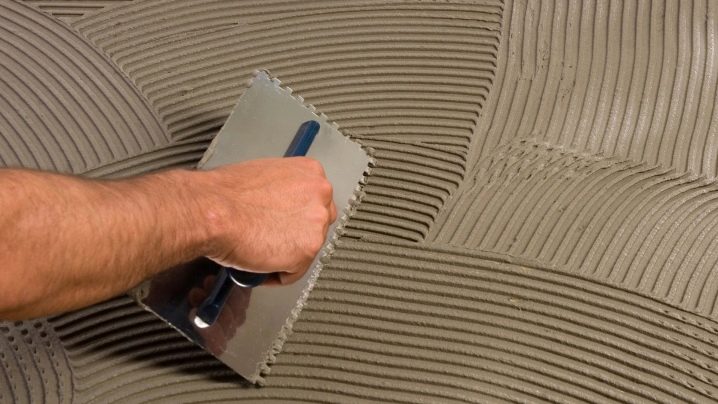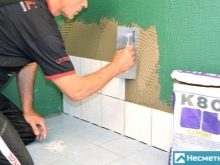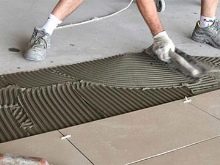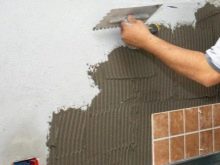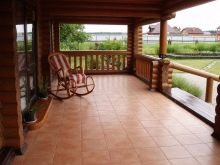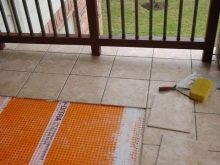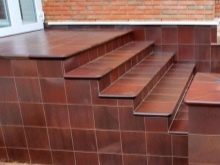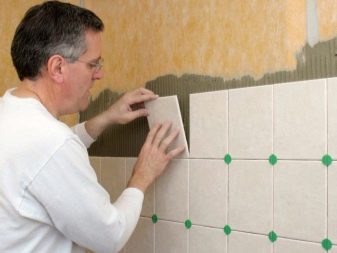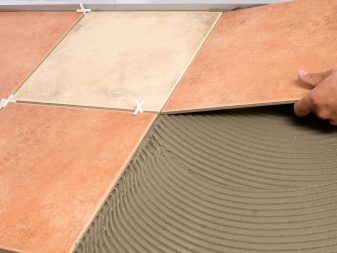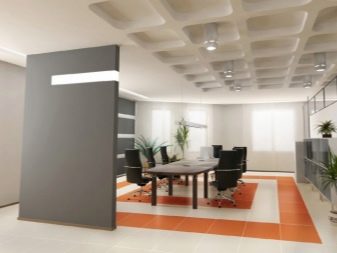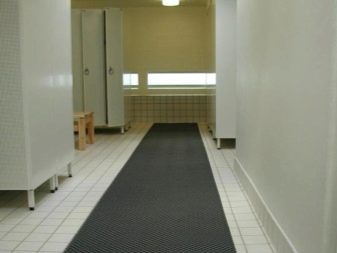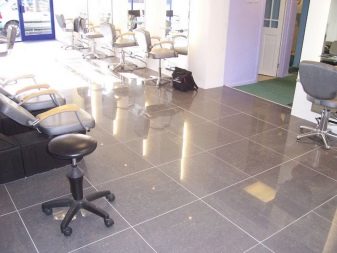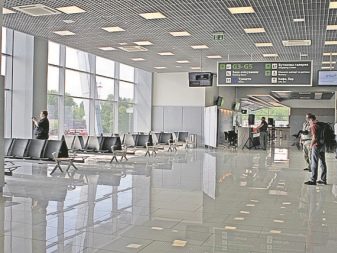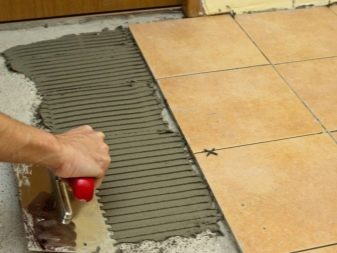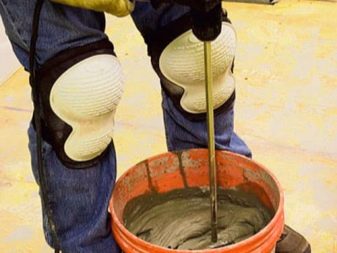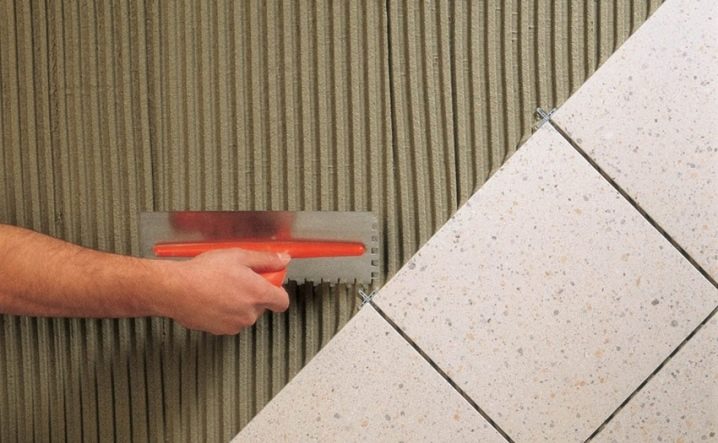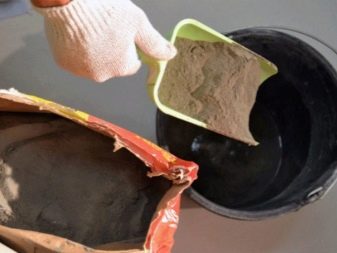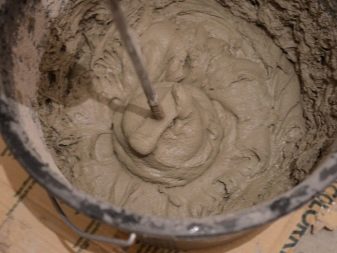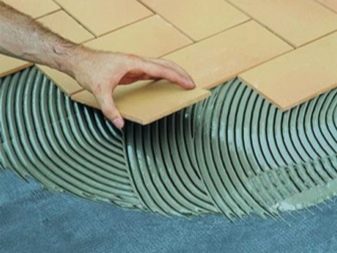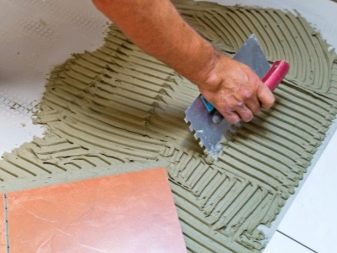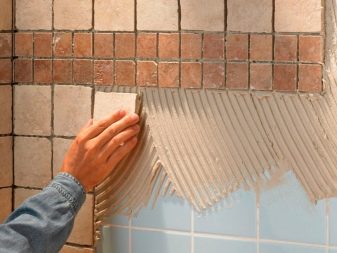Tile adhesive Litokol K80: technical characteristics and features of the application
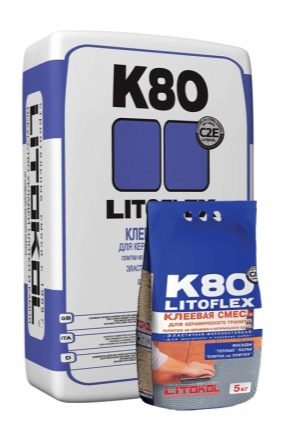
Tile adhesive should be chosen no less carefully than the ceramic tile itself during the arrangement or repair of your house. Tile is needed to restore cleanliness, beauty and order in the rooms, and glue in order to ensure its fastening for many years. Among other types of special popularity among customers enjoys tile adhesive Litokol K80.
What works are suitable for?
The scope of K80 is not limited to the laying of clinker or ceramic tiles. It is successfully used for laying finishing materials from natural and artificial stone, marble, mosaic glass, and porcelain stoneware. The glue can be used for finishing work in various rooms (from staircases to the fireplace hall of the house).
The reason for it can be:
- concrete, aerated and brick surfaces;
- fixed cement screeds;
- floating cement screeds;
- plaster based on cement or a mixture of cement and sand;
- gypsum plaster or gypsum panels;
- drywall sheets;
- old tiled flooring (wall or floor).
In addition to the decoration of walls and floor coverings in rooms, this substance is also used for outdoor work. Glue is suitable for facing:
- terraces;
- steps;
- balconies;
- facades.
A layer of adhesive for fastening or leveling can reach 15 mm without loss of quality of fasteners and the absence of deformation due to the drying layer.
Do not apply the composition for mounting large tiles and facade plates, starting with a size of 40x40 cm and more. And also it is not recommended to use it for the bases which are exposed to strong deformation. It is better to use dry glue mixes with latex inclusions.
Specifications
The full name of the tile adhesive is: Litokol Litoflex K80 is white. On sale is a dry mix in standard bags weighing 25 kg. Treats elastic glues of cement group. Possessing a high holding capacity (adhesion), the substance ensures reliable fastening of the facing material to any base.
The ductility of the adhesive does not allow the facing material to come off even under the conditions of stress between it and the base as a result of deformation from temperature or changes in the structure of interacting materials. That is why "Litocol K80" is often used for flooring and wall cladding in public places with a high load:
- corridors of medical institutions;
- offices;
- shopping and business centers;
- train stations and airports;
- sports facilities.
This adhesive solution is considered to be moisture resistant. It does not collapse under the action of water in bathrooms, showers and bathrooms, basements and industrial premises with high humidity. The possibility of finishing buildings outside, using K80, proves the frost resistance of its composition. The positive characteristics of the adhesive material include the following features:
- readiness of the adhesive solution after mixing with water is 5 minutes;
- the lifetime of the finished glue without loss of quality does not exceed 8 hours;
- the possibility of adjusting the already glued facing materials is not more than 30 minutes;
- readiness of the coated layer for grouting - after 7 hours on a vertical base and after 24 hours - on the floor;
- air temperature during the work with solution - not below +5 and not above +35 degrees;
- operating temperature of coated surfaces: from -30 to +90 degrees C;
- environmental safety glue (no asbestos).
This adhesive is one of the best in terms of ease of use and durability of coatings. It is not without reason that it is particularly popular with the population and has been highly appreciated by masters in the field of construction and repair. And the price is affordable.
Expenditure
To prepare the adhesive solution, it is necessary to calculate its volume depending on the area of the facing work and the ability of a specialist. On average, the tile consumption of a dry mix ranges from 2.5 to 5 kg per 1 m2, depending on its size. The larger the size of the facing material, the more solution is consumed. And this is because for a heavy tile a thicker layer of adhesive is needed.
You can focus on the following proportions of flow depending on the shape of the tile and the size of the teeth of the working spatula. For tiles from:
- 100x100 to 150x150 mm - 2.5 kg / m2 with a spatula of 6 mm;
- 150x200 to 250x250 mm - 3 kg / m2 with a spatula of 6-8 mm;
- 250x330 to 330x330 mm - 3.5-4 kg / m2 with a spatula of 8-10 mm;
- 300x450 to 450x450 mm - 5 kg / m2 with a spatula of 10-15 mm.
It is not recommended to work with tiles with a size of 400x400 mm and apply a layer of glue thicker than 10 mm.This is possible only as an exception, when there are no other undesirable factors (high humidity, significant temperature drops, increased load).
For other heavy facing materials and conditions of high load on coatings (for example, floor), the flow of adhesive mass increases. When this adhesive layer is applied to the base and the back side of the facing material.
Work algorithm
Litoflex K80 dry mixture is diluted in clear water with a temperature of 18-22 degrees at the rate of 4 kg of the mixture to 1 liter of water. The entire bag (25 kg) is diluted in 6-6.5 liters of water. Powder parts pour into the water and thoroughly stirred until a homogeneous pasty mass without lumps. After that, the solution should brew for 5-7 minutes, after which it is thoroughly stirred again. Then you can get to work.
Installation
The base for the lining is prepared in advance. It should be smooth, dry, clean and durable. In cases of special hygroscopicity, the base must be treated with mastic. If the lining is made on the old tile floor, you need to wash the coating with warm water and soda. All this is done in advance, and not after dilution of glue. The foundation must be prepared the day before work.
Next, you need to prepare the tile, clean its back side from dirt and dust. Soaking the tile in advance is not required, unlike laying tiles on cement mortar. You will need a spatula of the right size. In addition to the size of the comb, it should have a width that will cover up to 70% of the tile surface in one application when working indoors.
If the work is outdoor, this indicator should be equal to 100%.
First, an adhesive solution is applied to the base with the smooth side of the spatula in an even layer of small thickness. Then immediately - a layer of spatula scallop. It is better to apply the solution not for each tile separately, but on an area that can be lined with 15-20 minutes. In this case, there will be enough time to adjust their work. The adhesive is attached to the adhesive layer with a pressure, if necessary, it is leveled using a level or markers.
The tile is laid by a seam method in order to avoid its breakage during temperature and shrinkage deformation. The surface with the newly laid tiles should not interact with water for 24 hours. During the week, it should not be exposed to frost or direct sunlight.It is possible to rub seams in 7-8 hours after lining the base (one day later - on the floor).
Reviews
According to reviews of people using the adhesive mixture "Litocol K80", there were practically no people who did not like it. The advantages include its high quality, ease of operation and durability. The disadvantage for others is the high price. But good quality requires the use of quality material and high production technology.
About the dust-free glue LITOFLEX K80 ECO, see the following video.
